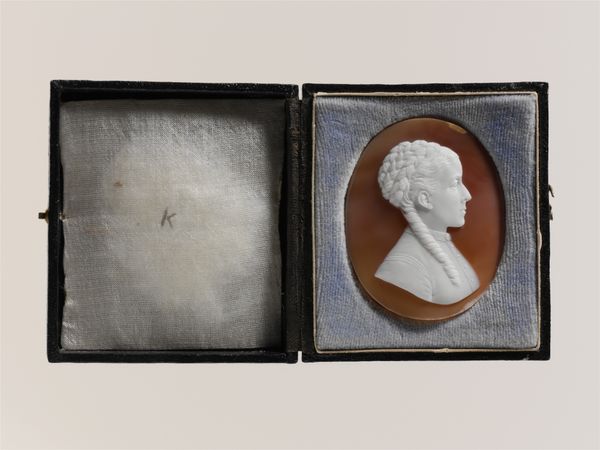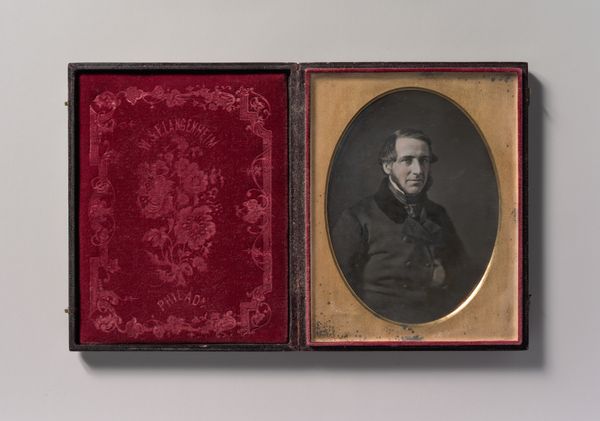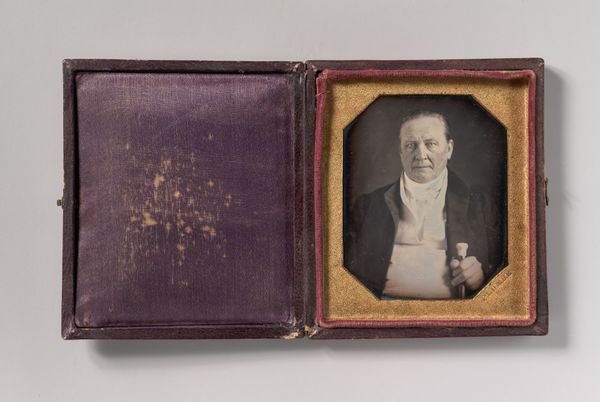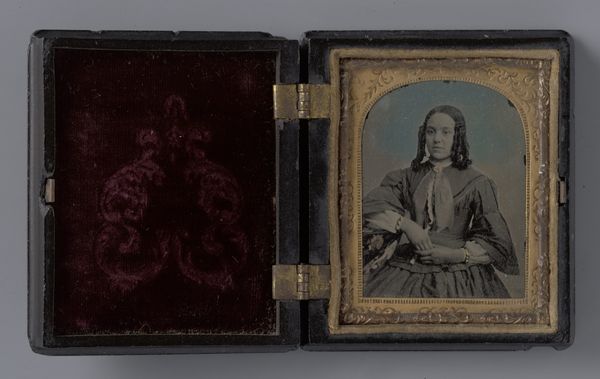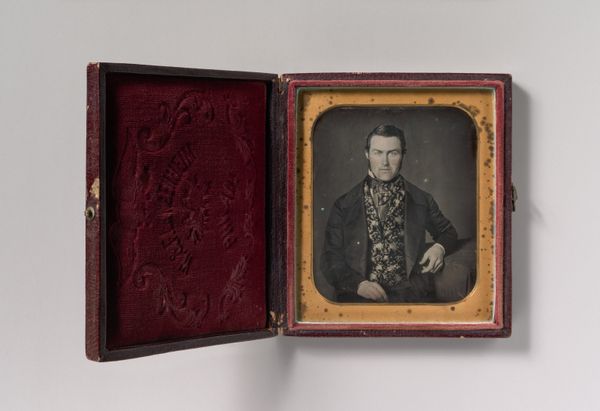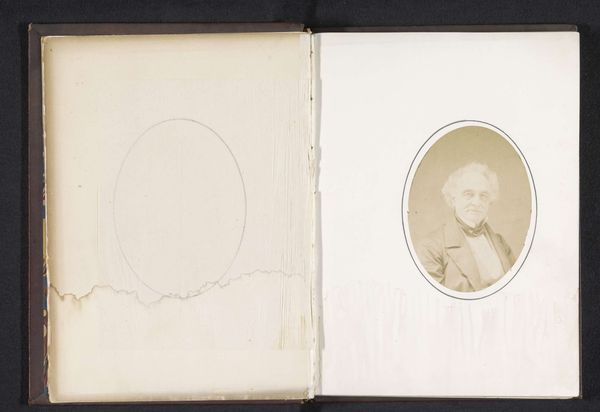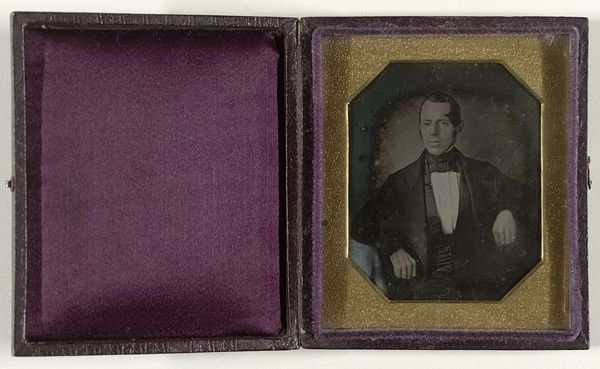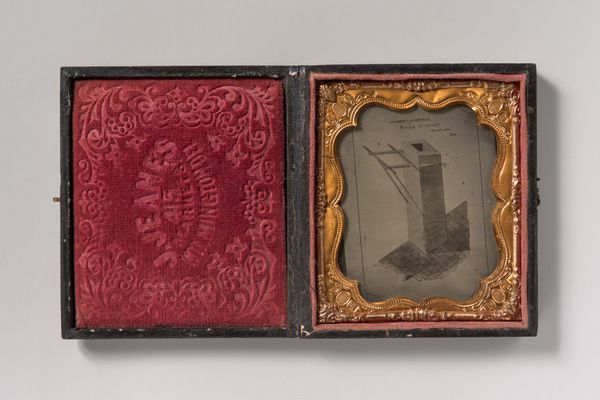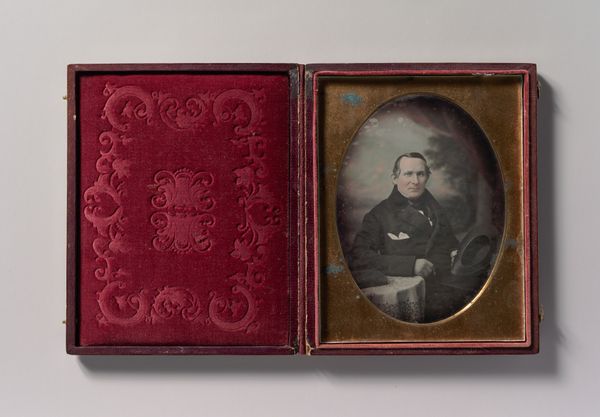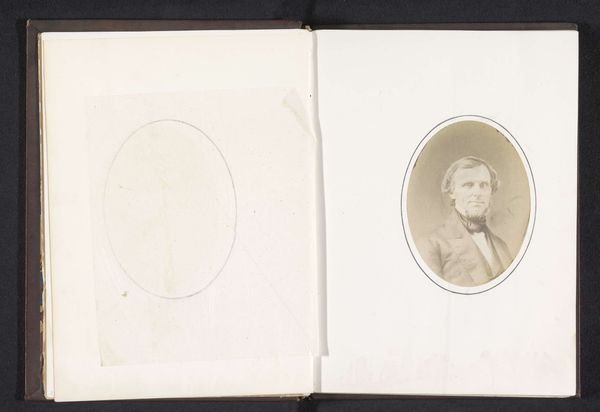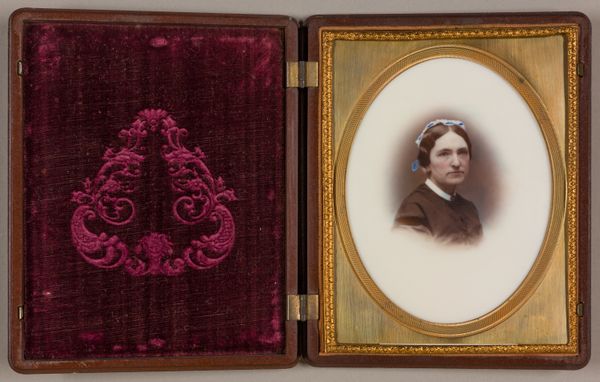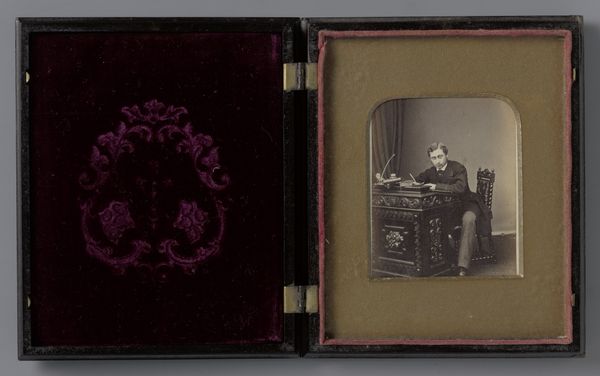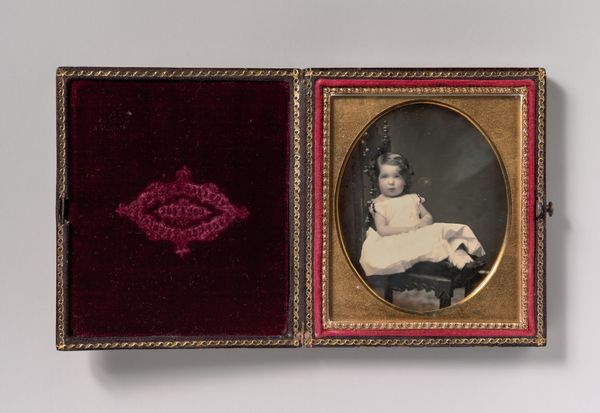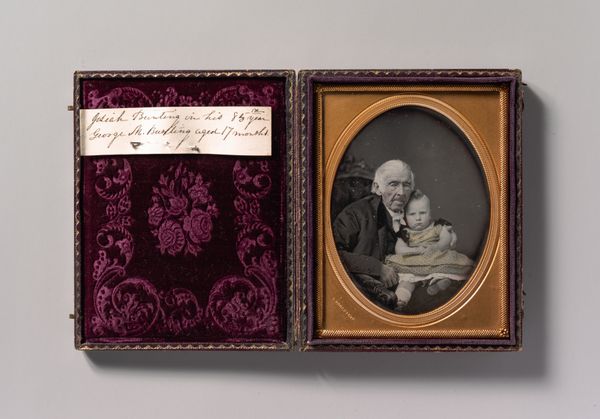
Dimensions: 1 3/4 x 1 1/2 in. (4.5 x 3.8 cm)
Copyright: Public Domain
Curator: I find the delicate precision of this portrait miniature so striking. This is a carving by Augustus Saint-Gaudens, titled “John Tuffs,” created between 1858 and 1861. It’s currently housed here at the Metropolitan Museum of Art. Editor: My first impression is of a ghost cameo, all bone white against that pale orange background. The severe attire, framed by the case, emphasizes the stark contrast between life and mortality. Curator: Indeed. And thinking about the conditions under which Saint-Gaudens made this... the artisanal skill, the slow removal of material, working directly with the shell, reveals a dedication to craft itself. Each layer carefully peeled away, exposing the essence of the sitter. Editor: But it also makes me consider Tuffs himself: who was this man to warrant such an object? This feels very much tied to the cultural obsession with documenting and preserving identities, particularly of privileged white men, within that historical period. Curator: Precisely, that duality is so compelling here. We have the celebration of individual skill and artistic practice. Look at the tiny bow tie. And at the same time it’s this small but tangible representation of power structures. I'm so fascinated by the economy of such small artworks like this. How many hours? What level of precision? And what was the artist's financial compensation for the carving itself? Editor: The object's existence speaks to social conventions of the time. I'd be curious to explore how Saint-Gaudens viewed his role in creating this form of personal memorabilia, a representation of wealth and social standing in mid-19th century society. How do artists and their art act as vessels of power and ideology? Curator: Yes. This artwork shows the value of skilled labor and of time devoted to these kinds of luxury commodities. It pushes us to question what kind of cultural messages and ideals this carving perpetuates through its artistic fabrication. Editor: For me, thinking about access and visibility, the sculpture encapsulates a very specific gaze of an elite class. These intimate portraits served a purpose beyond mere aesthetics; they were about solidifying a legacy and announcing one’s presence. It encourages us to question not just *who* is represented in art but *why* and *for whom*. Curator: Ultimately, its meticulous creation highlights the value assigned to both artistry and social position, raising poignant questions about production and representation. Editor: I agree. It's a tiny monument to both a man and an era, rich in material and meaning.
Comments
No comments
Be the first to comment and join the conversation on the ultimate creative platform.
